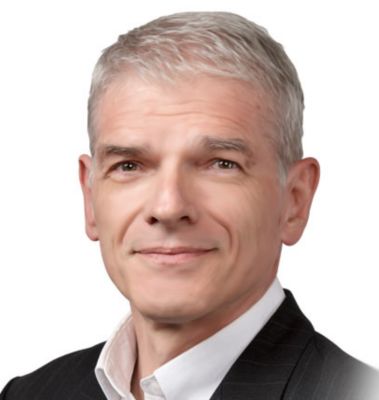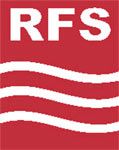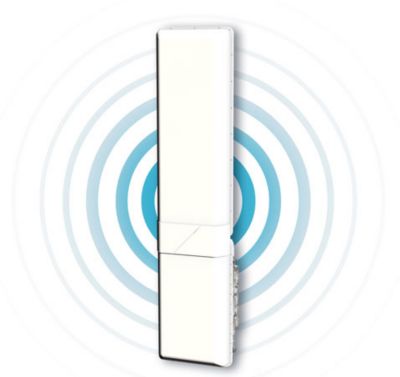-
-
Software gratuito per studenti
Ansys potenzia la nuova generazione di ingegneri
Gli studenti hanno accesso gratuito a software di simulazione di livello mondiale.
-
Connettiti subito con Ansys!
Progetta il tuo futuro
Connettiti a Ansys per scoprire come la simulazione può potenziare la tua prossima innovazione.
Paesi e regioni
Customer Center
Supporto
Partner Community
Contatta l'ufficio vendite
Per Stati Uniti e Canada
Accedi
Prove Gratuite
Prodotti & Servizi
Scopri
Chi Siamo
Back
Prodotti & Servizi
Back
Scopri
Ansys potenzia la nuova generazione di ingegneri
Gli studenti hanno accesso gratuito a software di simulazione di livello mondiale.
Back
Chi Siamo
Progetta il tuo futuro
Connettiti a Ansys per scoprire come la simulazione può potenziare la tua prossima innovazione.
Customer Center
Supporto
Partner Community
Contatta l'ufficio vendite
Per Stati Uniti e Canada
Accedi
Prove Gratuite
ANSYS ADVANTAGE MAGAZINE
DATE: 2020
Preparing for the 5G Revolution
André Doll, Chief Technology Officer, Radio Frequency Systems
As a world leader in wireless and broadcast infrastructure solutions, Radio Frequency Systems is rethinking its most foundational antenna technologies to prepare for the launch of 5G beginning in 2020. The company’s advice to others in a transforming industry? Invest in the advanced technologies and smart people that help your product development team rise to the challenge.
André Doll, CTO, RFS
The world around us has changed, and continues to change, dramatically because of technology innovations. Artificial intelligence, machine learning and robotics are becoming commonplace. Autonomous cars are just on the horizon. And every day, more and more data is uploaded and downloaded via cloud computing.
While these technologies deliver obvious benefits, they require faster streaming, greater bandwidth, uninterrupted connectivity, secure transmission and larger-scale processing — across an ever-growing user community.
In response, the global tech industry is preparing the next generation of telecom networks: 5G. With greater speeds, higher bandwidth, unparalleled reliability and low degree of latency, 5G will enable the level of performance needed to support both continuing tech innovations and ever-increasing user density. All this adds up to a huge market opportunity. In fact, according to IHM Markit, the global 5G value chain is expected to generate over $35 trillion in economic output and support over 22 million jobs by 2035 [1].
But, of course, 5G brings challenges. Today, device manufacturers, wireless providers and their entire end-to-end supplier networks are making fundamental changes in their products to succeed in this new era.
THE NEED FOR REINVENTION
As a world-leading provider of innovative wireless and broadcast infrastructure solutions — from antennas and cables to connectors and other components — Radio Frequency Systems (RFS) is preparing for the launch of 5G networks, starting in 2020.
For RFS, the changes will not be insignificant. For example, while 4G antennas were fixed-beam, off-the-shelf products, new 5G wireless technologies require that the beam is not static but follows a moving object. This means signal and beam tracking. RFS engineers must account for changes in beam direction and movement — while keeping the antenna radiation pattern completely intact. This represents an incredibly complex engineering challenge, one of the greatest since RFS was founded as an insulated wire manufacturer in 1900.
And RFS is not alone. Other companies that supply or partner with the global wireless industry are also tasked with reimagining their core products and services considering the new demands of 5G.
RFS AT A GLANCE
| Headquarters: | Munich, Germany |
| Number of employees: | 2,100 |
| Number of manufacturing facilities: | 8 (in Australia, Brazil, China, France, |
ADVANCED CHALLENGES REQUIRE ADVANCED TECHNOLOGY
How is RFS preparing for the complete reinvention of its products and solutions in light of new technology innovations? The answer is simple: By using equally innovative technology, specifically engineering simulation.
For 19 years, RFS has been using simulation to design and test antenna arrays in a risk-free, low-cost virtual world. Today, RFS employs more than 180 engineers, and over one-third of them are trained in using engineering simulation software.
RFS’s modular active passive antenna (APA) directly addresses the real-world challenges operators face as they evolve to 5G.
Antennas are expensive and time-consuming to build in the physical world. In addition, their performance must be tested in place, to account for interferences from surrounding objects. Simulation has helped RFS create a competitive advantage by eliminating much of the costs and time associated with building and testing physical prototypes.
As the world transitions to 5G, the physical factors that come into play are even more complex. Antenna performance must be simulated in motion and with the beam pointing in different directions. Up to 200 different elements are involved. Complex phased-array beam-forming simulations — made possible only by the most advanced simulation software available today — represent the only practical and dependable solution.
Because of the dramatic increase in product design complexity resulting from 5G network design, antenna simulations that once took just one hour now take three or four days. And, without the use of advanced simulation technology, that engineering work would take weeks or even months. RFS would never be competitive in the race toward 5G without employing advanced simulation technology.
TURNING CHALLENGES INTO OPPORTUNITIES
Disruptive change will always represent a challenge — but it also represents an opportunity for companies like RFS that anticipate it and prepare strategically. By using advanced simulation technologies for nearly two decades to solve smaller technical challenges, the product development team at RFS is better equipped than competitors to capture the enormous financial opportunities of 5G.
By understanding and answering customers’ new needs faster and more effectively than other companies, Radio Frequency Systems is poised for market leadership as the high-tech communications industry transitions to 5G. RFS will remain committed to identifying the best technologies, the best people, the best partners and the best product solutions — so the company will be ready for whatever the future brings.
FIVE KEYS TO THRIVING IN A REDEFINED INDUSTRY
While not every industry is being impacted today as significantly as the wireless community, nearly all businesses must rethink their models to some extent due to the ongoing digital transformation of the world.
Based on its experience in preparing traditional products for the new world of 5G, Radio Frequency Systems has defined five key requirements for succeeding when your entire industry is changing:
1. Fight fire with fire.
If new technology is upending your industry, look for an equally innovative technology solution to help you. Just as 5G is redefining wireless technology, enhancements to software, solvers and algorithms are making simulation-based product development tools smarter and faster. Turn technology from a challenge to an advantage.
2. Do not hire more people, hire the right people.
Many companies react to product development challenges by adding headcount. RFS asks, “What skills do we need?” — then recruits people with those specific skills. In the case of 5G, RFS is relying on engineering simulation. RFS hires engineers with a solid understanding of antenna science and physics — coupled with the ability to learn simulation software.
3. Attack change incrementally.
Big changes like 5G do not happen overnight, but gradually. RFS offers transitional solutions that leverage customers’ existing 4G investments, while laying the groundwork for 5G. Engineering simulation and smart product developers help develop an affordable, practical product road map that moves customers ahead incrementally.
4. Define the new service challenge — and lead in meeting it.
It’s not enough to ask, “How must products change technically?” Leaders ask: “What is the biggest new service need — and how can we meet it?” Guaranteed quality of service (QoS) is the most important metric for communication systems. RFS employs the best technologies, including engineering simulation, to deliver the most reliable communication systems to customers.
5. Never stop looking ahead.
5G is important, but eventually 6G will bring even greater enhancements. Leaders always look to the future. RFS forms close relationships with both customers and technology partners to anticipate and capture new opportunities beyond 5G. RFS also collaborates with technology providers like Ansys to remain at the forefront of state-of-the-art engineering.
Reference
[1] The 5G Economy: How 5G Technology Will Contribute to the Global Economy, cdn.ihs.com/www/pdf/IHS-Technology-5G-Economic-Impact-Study.pdf




